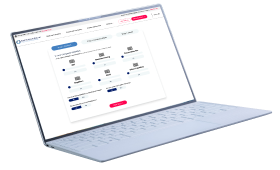
Understand your company's position and learn more about the options available
Require Immediate Support? Free Director Helpline: 0800 644 6080
Free Director Helpline: 0800 644 6080
Updated:
The cost of closing a limited company in the UK can vary considerably depending on your circumstances. Striking a solvent company off the Companies House register will cost you a £10 admin fee, but liquidating an insolvent company can cost £4,000 or more.
Closing a limited company can be a cheap and straightforward process. If your business has ceased trading, can pay all its debts and has assets worth less than £25,000, you can close it via a process called Voluntary Strike-Off. It costs a maximum of £10 and all you have to do is send the relevant paperwork to Companies House.
On the other hand, if your business is insolvent, you must appoint an insolvency practitioner to close your business down for you. Acting as the liquidator, they will settle your outstanding contracts with suppliers, identify and sell your assets and repay your outstanding debts. Insolvent liquidations require a significant amount of work, with typical fees ranging from £4,000 to £6,000, depending on the case’s complexity.
Free 60 Second Test
For Ltd Company Directors
What are you looking to do?
Choose below:
Closing a limited company that can repay all its debts is a relatively straightforward process. You have two routes you can take, with the most appropriate process depending on the value of the company’s assets.
If the company has assets worth less than £25,000, Voluntary Strike-Off is usually the best option. On the other hand, if the company has significant assets to distribute, a Members’ Voluntary Liquidation (MVL) will cost more initially but can lead to significant tax savings that more than cancel out the liquidator’s fee.
“After submitting my '60 Second Test' I received a complimentary Insolvency Options guide packed full of useful information. The team of insolvency specialists phoned me back in less than 10 minutes after reviewing my details and guided me through the next steps. Really helpful! Thank you Sophie!”
Patricia
Voluntary Strike-Off, also known as Dissolution, is the cheapest and quickest way to close a limited company. It costs just £8 to apply for strike-off online or £10 to send form DS01 to Companies House.
If your company is solvent, has assets worth less than £25,000 and has not traded or changed its name in the last three months, you can apply for Voluntary Strike-Off. As long as you have informed the relevant parties and there are no objections, the company will be removed from the Companies House register and will cease to exist.
Members’ Voluntary Liquidations (MVL) start at around £1,500 for small companies with few assets and rise to over £3,000 where more valuable assets are involved. If your company is solvent and has assets worth over £25,000 to distribute to its shareholders, an MVL could be the most cost-effective closure method.
Despite the costs, this process can lead to a significantly lower tax bill than a Voluntary Strike-Off. That’s because all the distributions are subject to Captial Gains Tax rather than Income Tax. If you are eligible for Business Assets Disposal Relief, you could pay just 10% tax on the proceeds from the sale of company assets.
Can’t pay CBILS or Bounce Back Loan?
Don't worry - there are thousands of other company directors in the same position. If you are struggling to keep up with your Covid loan repayments, speak to a member of the Real Business Rescue team to discuss your options. It's Free & Confidential.
The team are available now - 0800 644 6080
Get a Quote Find Your Nearest Office
If your company is struggling financially and cannot afford to pay its debts, a Creditors’ Voluntary Liquidation (CVL) is the most common method of closure. This process costs more than solvent liquidation as there’s usually more work for the liquidator to do.
The other process is called Compulsory Liquidation. In this case, your creditors must pay to issue a Winding Up Petition against your company and force you into liquidation. However, this is certainly not an easy option, as your conduct as a director will be investigated and you could be made liable for company debts or be disqualified from acting as a director in the future.
As a ballpark figure, you can expect to pay between £4,000 and £6,000 to liquidate an insolvent company with relatively few assets, minimal debtors and no ongoing litigation. This figure will rise for more complex cases.
Despite its name, this process is not initiated by your company’s creditors. As a company director, you choose to enter the process voluntarily and appoint an insolvency practitioner to liquidate the company on your behalf.
The cost to force your company into Compulsory Liquidation is typically around £2,500 and includes a fee to issue the Winding Up Petition, a court deposit and a filing fee. The petitioning creditor will pay this fee initially but hope to recover it from the sale of your company assets.
A liquidator will also be appointed if your company has assets to sell. Their fee will typically be around £2,000 and will be covered by the sale of assets.
Need to speak to someone?
If your company is struggling with unmanageable debts, squeezed cash flow, or an uncertain future, you are far from alone. We speak to company directors just like you every single day, and we are here to give you the help and advice you need.
Call our team today on 0800 644 6080
In solvent liquidations, the liquidator’s fee is not usually a problem, as it can be covered by the sale of your company’s assets. However, in insolvent companies, it’s not always so straightforward.
In a Creditors’ Voluntary Liquidation, the liquidator’s fees are paid before any other creditors, so they can also be covered by the sale of assets. However, if there’s not sufficient value in your company’s assets to cover the cost of the liquidation, you could be made personally liable for the liquidator’s fee or made to top up the shortfall.
However, it’s worth noting that if you choose to liquidate your company voluntarily, you could be eligible for director’s redundancy pay. The average redundancy payment for company directors is around £12,000, which would more than cover the liquidator’s fee.
If you’re thinking about closing a solvent or insolvent company, we can help you find the most cost-effective closure method based on your specific circumstances. Call our team of insolvency practitioners for a free, same-day consultation or arrange a face-to-face meeting at one of our 100+ offices across the UK.
Still unsure whether liquidation is right for your company? Don't worry, the experts at Real Business Rescue are here to help. Our licensed insolvency practitioners will take the time to understand the problems your company is facing before recommending the best course of action going forward based on your own unique circumstances.

Complete the below to get in touch
For Ltd Company Directors
What are you looking to do?
Choose below:
We provide free confidential advice with absolutely no obligation.
Our expert and non-judgemental team are ready to assist directors and stakeholders today.

Understand your company's position and learn more about the options available

Find your nearest office - we have more than 100 across the UK. Remote Video Meetings are also available.

Free, confidential, and trusted advice for company directors across the UK.